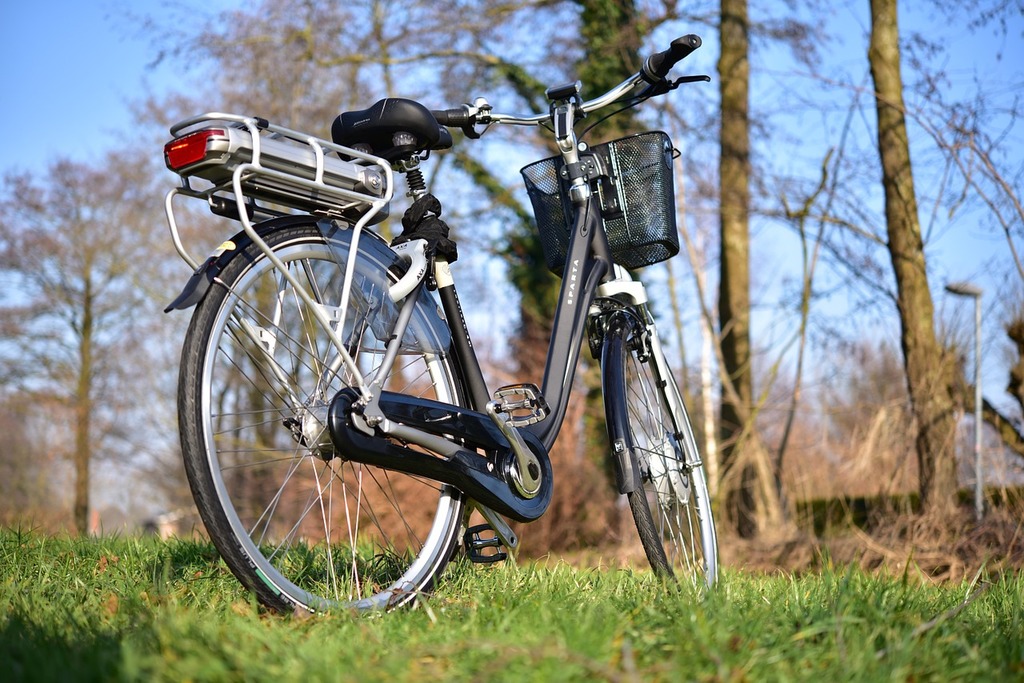I suppose this will be read like a sequel. Or, to the uncharitable reader, eating crow. In a previous essay, I wrote about defying the electric grid, loving the petrochemical-soaked South, and owning a 2003 Ford Ranger that sometimes got me where I needed to go. Now I must finish the story. After two years, I gave up the American hobby of throwing money in a hole in the ground, and I came to understand that I’d never get my truck running as it should. So I sold it for $3,600 and used the money to buy an e-bike.
I know. Trust me, my father and brother let me know too, so you don’t need to let me know more. One relative asked when I’ll buy a vintage Bernie sticker. For the first time in my driving life, I don’t own a truck. Our remaining family automobile, a Subaru Outback, has a quite different reputation than Ford’s and I feel that fact staring at me when we pull into a local barbecue joint. Or maybe it’s not other customers’ eyes, only my own flimsy self-awareness. I’m learning. It does still feel odd to wear cowboy boots while driving Japanese.
I’m also learning more about electric bikes. First, you should do your research. There’s a lot of bad, cheap ones out there, including, yes, some that catch fire. You should not expect to spend less than $2,500; you are buying a cheaper form of an automobile, not a nicer form of a bike. Even so, do not buy fully motorized or throttling bikes that resemble motorcycles, only those with pedal-assist. The pedal-assist makes for a more controlled and fulfilling ride (more on that later). A mid-drive, Bosch electric motor is best. The Dutch, Swiss, and Germans know what they’re doing. And don’t buy a Class-3 bike which can get you up to 30 mph. If you want to live, settle for a Class-1 bike with a top speed of 20. With that research behind me, I bought a used Benno Boost electric bike for less than what I’d sold my truck for, then spent some of the rest on saddle bags (or “panniers”) and lights.
How’s the ride going so far? Surprisingly well. I’m saving on car insurance and gasoline. I’m told it only costs about $10 per year to charge my battery. My commute to work takes only five more minutes than it had taken to drive, and I get free parking to boot. Texas weather is still very hot, so I must bring changes of clothes. On days off, I can drive down to the river, and though the bike has no suspension, it’s weighty and hardy enough to handle dirt paths.
I should note that I don’t live in a bike-friendly metropolis like Portland or Greenville, let alone a bike-only island like Mackinac. As with most Southern cities, Waco, Texas can hardly be called friendly to bikes. It has few bike lanes and many local drivers who seem to hate cyclists. I can’t ride safely to a grocery store. But there are enough bike lanes for my daily commute to work. Recently, we moved into an old, small house within city limits that can connect to uptown, downtown, and campus by bike. Though I must occupy car lanes at certain junctures, at no point must I ride in an area with a speed limit above 30. I doubt the move to biking could have happened if not for our house’s location, which costs more for less space. But we’ve been happy about the coincidence. It’s a sort of urban life, but at an efficient scale that comes close to what I was, however inefficiently, trying to learn from rural life.
I admit, the e-biking life isn’t perfect. I already wonder if the “e-” means I’m cheating. I still harbor some faint hopes of living something like a rural life, and I doubt an e-bike would either count aesthetically or work safely or efficiently in the American countryside. People just live too far apart from each other there, and the highways separating them are not places for anything that weighs less than a ton. Even so, I’ve heard that Australian ranchers ride e-bikes around their sheep stations. The American hunting industry—never underestimate its power to make money and drive men’s fashion—embraced e-bikes early. Perhaps one day, a wealthy, politically influential weekend hunter may begin yearning to drive his BAKCOU Kodiak to work too, and then make some phone calls. Until then, people like me can only apply some principles of agrarianism—coherence, propriety, scale, direct control—to our urban environment.
And the result isn’t always just compromise. Aspiring Luddite though I am, I should remember that not all technical invention is bad. Romano Guardini once distinguished three kinds of artifacts. First, there are simple tools, like axes or hammers, which the human “absorbs into the functional context of his body, to enhance a particular effort.” Then there are appliances, like windmills, which exist entirely apart from the body yet rely on natural forces to do their work, like grinding grain. Finally, there are machines, which both exist entirely apart from the body and must be fueled by energy that must be extracted and implemented by scientific know-how, and thereby may be disposed at will to power the machine apart from either human function or natural energy. So, entire “processes of scientific knowledge and technological construction lie between the human and the machine, and just as much between the machine and nature.” Though they are created and managed by humans, machines have a much greater autonomy, and therewith context-less-ness, than tools or appliances.
Of these three categories, Guardini argues our senses of the “natural” and “organic” only arise from the first two. The first two—especially the first—help me live my life, while the third does part of my life for me, thereby taking some of it away. There is a world of difference between a sailboat and an ocean liner, a plow and an automated combine. Scientific progressives once dreamed we would ride jetpacks or other devices that augment our bodily powers. Common fears of Neuralink or cyborgs notwithstanding, most modern technological development has taken the opposite course, inventing ever more autonomous machines that replace human beings and close us off from our natural and organic contexts, leaving us less empowered and with little to do besides consume things that machines provide us.
And yet, invention of impressive tools and appliances continues. In the past two centuries, one incredible device has been invented and perfected: the bicycle, perhaps the most efficient ever contrived, averaging 92% efficiency. It augments human energy, rather than replacing it, so it counts as one of Guardini’s tools. But what does an electric battery do to this wonderful system? I still doubt the efficiency of electric cars; the batteries are much too heavy for those machines. But batteries can fit very well on smaller vehicles and appliances. My mid-drive, Bosch motor is 75% efficient. And since it’s a pedal-assist, not a throttle, the motor enhances my physical activity (which, of course, is already augmented by the efficient bicycle mechanism). I’m still doing work, albeit with substantial aid from both the battery and the bike. In this respect, might an e-bike still count as a tool, in Guardini’s sense? Electric power is there only to help a tool help me do a human task, to live my life, rather than taking away part of my life from me.
And I do mean ‘enhance’ and ‘live my life’ quite literally. Automobiles shield you from the outside world, its sounds, its colors. But on my bike, I encounter my environment directly. I smell the trees and flowers—and the exhaust from pollution. I hear garage bands practicing as I pass, as well as the occasional church bells. Their rhythms help me know what time it is, now that I must hear them. I see the buildings I ride by, especially the lovely churches. I’ve found several midcentury modern buildings of downtown Waco—the kind that traditionalist would complain about online—aren’t so ugly in-person. They have a texture and play with shadows and light in ways that you can’t see in a photograph. I appreciate the downtown scenery more—and lament even more its shuttered storefronts and decaying historic homes. I grumble when I see a lot of campaign signs for candidates I don’t like. I can’t look down at my phone when I stop by a homeless person asking for money. Not that I can ever look down at my phone anyway. Cycling is dangerous. One day, likely, I will be hit by a driver. I can only delay that day by constantly being aware of my surroundings—the car coming up to turn right, the truck passing me by a little too closely—and acting as much like a deferent saint as I can.
I have no other choice: I must pay attention. And that is what I like most about my e-bike. It calls forth the attention this world is always trying to take away.
I admit, I still fit awkwardly into this new commute. I don’t feel like ‘the kind of person’ who rides an e-bike to work, nor do I want to be that kind of person. I don’t like those blue campaign signs that (I project) other people assume are in my yard. I miss my truck. I wish our daily driving habits weren’t polarized. I wish more conservatives cared more about human-scale transportation.
But I still get to live my life. And it’s a better life than one ruled by the demand to act only so long as one is in accord with other people in your group. That demand driven by chatter of how a certain type of person should live what type of life. That chatter which imprisons us in our mediated and lonely roadways, sprawling over our land and our hearts and minds.
Some weeks ago, I read a New York Times article about a group of conservatives who are trying to get people together to build their own neighborhoods. One of their justifications: “to drive by an architecturally significant church every day, and I can hear church bells.” I share that yearning. But I won’t wait to move somewhere with other like-minded people. Every day, I ride my electric bike past our beautiful neighborhood church and hear the bells ring—and they ring majestically on July 4th celebrations—then I park my bike next to my Subaru, surrounded by our generally blue-tinted voting precinct, and walk into our little hundred-year-old home. None of this, as it turns it, is all that red-coded. But it feels right.
Image via Picryl













Electorally, my side just suffered a terrible defeat. But culturally and environmentally, my side just keep organically going on, with small wins here and there (like apparently one more in Waco!), giving me hope for our world. Good to see this additional step in local sustainability, Casey! Thanks for sharing your story.
Comments are closed.